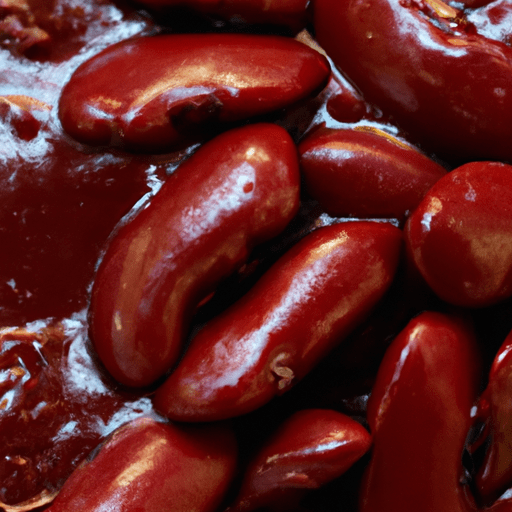Exploring the Irresistible Sweetness of Red Bean Paste
If you’ve ever had the pleasure of indulging in Asian desserts, chances are you’ve come across the delectable and versatile sweet red bean paste. Known by various names such as “anko” in Japan, “pat” in Korea, and “dou sha” in China, this delightful ingredient has been captivating food enthusiasts for centuries. Today, let’s delve into the world of sweet red bean paste and uncover its fascinating culinary qualities, nutritional benefits, and cultural significance.
Taste and Texture
One bite of sweet red bean paste is enough to make anyone a fan. This velvety, smooth paste showcases a rich, deep red color that is as visually appealing as it is delicious. The taste can be described as subtly sweet with a hint of nuttiness, making it an ideal filling for a wide range of desserts. The texture is luxuriously smooth, allowing it to meld effortlessly with other ingredients.
Versatile Uses in Cooking
Sweet red bean paste is incredibly versatile and finds its way into a myriad of desserts spanning different Asian cuisines. Perhaps one of the most iconic uses is in traditional Japanese confections, where it fills delicate mochi, dorayaki (a pancake-like treat), and taiyaki (a fish-shaped pastry). In Korean cuisine, it is often used as a filling for buns, pancakes, and rice cakes. Chinese cuisine incorporates sweet red bean paste in mooncakes, baozi, and tangyuan. The possibilities are truly endless!
Nutritional Value
Besides its delightful flavor, sweet red bean paste brings several nutritional benefits to the table. Red beans, the primary ingredient, are packed with dietary fiber, protein, and essential minerals such as iron, magnesium, and potassium. Additionally, red beans are naturally low in fat and cholesterol, making them a healthier alternative to some other dessert options. While sweet red bean paste should still be enjoyed in moderation, it’s reassuring to know that it offers some nutritional value amidst its indulgent nature.
History and Cultural Significance
The origins of sweet red bean paste can be traced back to ancient China, where it was first created during the Song Dynasty (960-1279 AD). Over time, this luscious concoction made its way to other East Asian countries, adapting to local tastes and inspiring a variety of unique desserts. Sweet red bean paste holds cultural significance in many Asian festivities, being associated with joy, good luck, and harmony. Its use in celebratory foods like mooncakes during the Mid-Autumn Festival and yudeok (rice cakes) during Korean New Year reflects its revered status.
Fun Facts About Sweet Red Bean Paste
- In Japan, sweet red bean paste is so beloved that there are specialized shops called “anpan-ya” solely dedicated to making and selling different variations of anpan, a pastry filled with sweet red bean paste.
- The vibrant red color of the paste comes from the small red azuki beans used to make it.
- Sweet red bean paste can come in two main textures: smooth (koshian) or chunky (tsubuan), allowing for diverse preferences in desserts.
Your Sweet Adventure Awaits
Whether you’re a culinary explorer or simply have a sweet tooth, sweet red bean paste is a must-try ingredient. Its delightful flavor, incredible versatility, and cultural significance make it an essential component of numerous Asian desserts. So, why not embark on a sweet adventure and explore the world of sweet red bean paste? Indulge your senses, savor the history, and discover the enchanting allure of this timeless ingredient.
Happy cooking and bon appétit!
Sweet Red Bean Paste
Origin: Sweet red bean paste, also known as anko or red bean paste, is a traditional ingredient in East Asian cuisine, particularly in Japan, China, and Korea. It has a long history and is believed to have originated in China over 1,000 years ago.
Common Uses: Sweet red bean paste is widely used in various Asian desserts. In Japan, it is a key ingredient in popular treats like dorayaki (pancake-like dessert), taiyaki (fish-shaped pastries), and anmitsu (a traditional Japanese dessert consisting of agar jelly, fruit, and red bean paste). In China, it is used in mooncakes, steamed buns, and dumplings.
Nutritional Benefits: Sweet red bean paste is made from azuki beans, which are high in fiber, protein, and essential nutrients such as iron, potassium, and folate. It is a healthier alternative to many Western-style sweet fillings, as it is generally low in fat and cholesterol.
Unique Properties: Sweet red bean paste has a distinctive texture and flavor. It is typically smooth and thick, with a slightly grainy texture due to the mashed beans. The flavor is subtly sweet with a nutty undertone, which pairs well with other ingredients in Asian desserts.
Historical Significance: Red beans have been cultivated and consumed in East Asia for centuries. In traditional Chinese culture, red beans are associated with good luck and prosperity, and they are often used in celebratory dishes. In Japan, sweet red bean paste has become deeply ingrained in the culture through its association with traditional festivals and ceremonies.
These facts give you a comprehensive overview of the origin, common uses, nutritional benefits, and unique properties of sweet red bean paste, as well as its historical significance in East Asian cuisine.




Use the share button below if you liked it.
It makes me smile, when I see it.